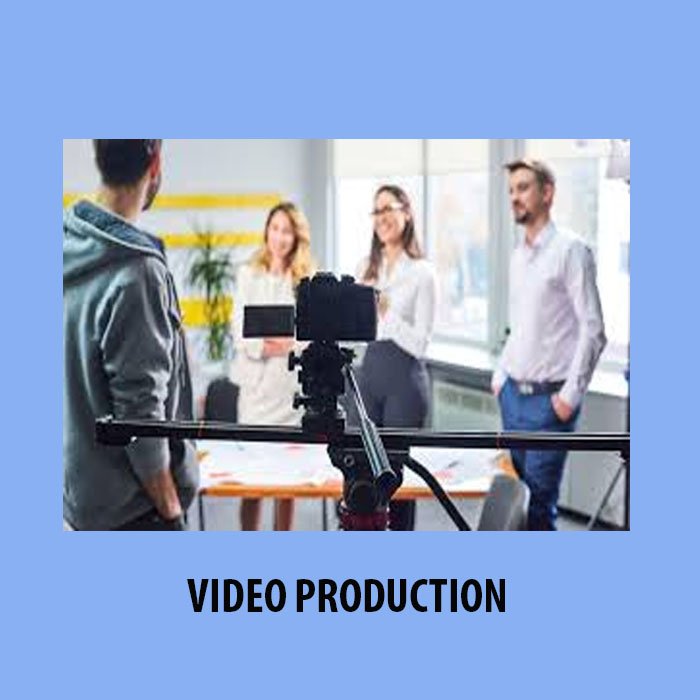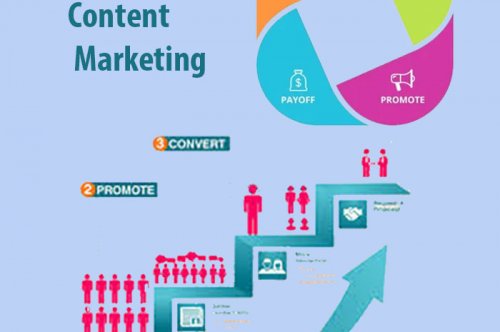Video Production

What is Video Production
Video production is simply everything that goes into the ideation, planning and execution of a video. Historically video production involves three phases: Pre-production, Production and Post-production.
Our experience as a video production and marketing agency has taught us that the production of a video doesn’t end at Post-production. But as it pertains to video production for marketing purposes, wewant to include the two additional phases of Strategy and Distribution to ensure a successful, dynamic finished product.
What’s the Difference?
Video production is in a class by itself, employing a wide variety of technical, creative and design techniques to tell a short story, usually for the purposes of marketing a product, idea, company or concept. Here’s how this medium stacks up against other similar video styles:
Video production vs. film production
The contrasting element between video production and film production is simply the medium used to achieve the end result. A film production uses film to record the visuals that the camera sees, while video production captures the images via a tape or memory card. Old habits die hard, so even though film is becoming less and less common, many video productions are still referred to as “film productions.”
Video production vs. videography
What sets video production apart from videography is the planning or direction of the story. With video production, every detail from the creative concept to the execution is usually meticulously spelled out, sometimes with detailed scripts, storyboards and scenes. When it come to videography, capturing video of an interviewee or event is more spontaneous and usually controlled primarily by the person behind the camera.
Video production vs. video editing
Video editing (aka Post-production) is technically a part of the broader video production process. This task is performed by a technician at a computer after the images are recorded, while video production is the overall process carried out by a crew of experts who collaborate to capture, process and edit images for the finished video.
Why Video Production?
Video is one of the most successful forms of media used today to engage, inspire or educate a viewer. By combining both visual and audio elements, video production allows you to fully engage a specific audience and take them on a journey with the help of creative and technical manipulation. Because this medium is so versatile, many would argue that video production is the quintessential tool to accomplish any kind of storytelling.
The Phases of Video Production
Video production is a balancing act. Each step in the video production process and Television commercial production process must be carefully planned and executed to make a short story or message come to life. Think of it this way: You start with an end goal that gets your video’s future viewers to feel and act a certain way, and then create a miniature world where every detail is carefully crafted to make the production believable. Decisions made during the production stages should be designed to help accomplish this objective, with an extended team of creatives, techs, graphics designers and editors coming together to make it happen. Since time is money, you must make sure that the costs involved with each decision fit into the budget, and that each task is done efficiently and on deadline.
Stage 1: Strategy
Before starting any video production, the first thing to look at is the overall goal of the video. Ask yourself what the motivation is behind the scenes — are you trying to get people to visit your website, learn more about your product or service, or put their trust in your brand? This big-picture goal will drive your decision-making. Before you begin planning the next phases, take into account factors like the video’s smaller goals, the target demographic, where the video will live, your budget and what metrics you’ll use to track the video’s reach and response. Answering these questions upfront will help you greatly in your video’s next steps.
Stage 2: Pre-production
Pre-production involves all of the creative and planning needed to move ahead with production — things like ideation, concept creation, mood boards, style guides, actor casting, sourcing locations, props, script writing and scheduling. Detailed and accurate budgeting is key in this phase, to ensure not only that you have the resources you need to make your story come to life, but also that you get your money’s worth from all of the vendors involved. Pre-production is often the most time-consuming part of a video production, but it’s also one of the most important phases, effectively setting the tone for a successful video production. Without due diligence during Pre-production, a poorly-planned video can fall apart in the blink of an eye and cost a lot of time and money for everyone involved.
Stage 3: Production
Production is the spot where the magic happens, where the actors deliver their lines, background ideas become scenery and a script comes to life with the camera rolling. Depending on the size of the production, the Production phase could last a few days or a few hours as the various departments of directing, camera, lighting, art and more work in symbiosis to achieve the video goals. Depending on the concept, production may take place in a studio or “on-location” for a more lifestyle-driven shoot. For on-location shoots, besides renting the property itself, there might be other hoops to jump through such as securing filming permits, hiring police/security and getting the owners to sign legal location releases. This stuff is fairly standard for a production, but still requires a few weeks notice to pull off. Since film studios are built to cater to film production, many of the on-location concerns are included in a flat fee, with a premium cost attached to certain things like equipment rental and overtime. Keep in mind that Production is where your largest risks are often present—budget overages, stress, schedule issues—and where experienced management can make or break you.
Meet the Players
There are a lot of different people who come in at the Production phase, categorized by department:
The Director – Often alone in his or her own “department,” the director is the creative lead, charged with making sure the story, goal and concept of the video is achieved. A good director will know how to leverage the expertise of all the other departments and crew to fulfill a singular vision.
The Production Department – This group leads the other teams and brings everyone together to make the show go off without a hitch. Run by the producer, the production crew includes production coordinators and assistants, assistant directors, accountants, location scouts and casting directors and assistants. Depending on the size and scope of the production, some people may wear multiple hats or share responsibility for whatever’s needed. For example, the production assistant may take care of finding the location, or the assistant director may host a casting session.
The Camera and Lighting/Grip Crews – The camera/lighting crews are in charge of the visual aspect of film production. Headed up by the director of photography (DP), they control the camera and all of the lighting and grip equipment. The camera department may include camera operators, camera assistants, digital imaging technician (DIT), Steadicam operators and others. The lighting/grip department is made up of “grips” who provide camera, lighting and electrical support, such as gaffer, best boy, key grip and dolly grip.
The Sound Department – The sound crew, as you may have guessed, is comprised of technicians who control everything you hear on a production. These techs work together to make sure the dialog, sound effects, background noise and other audio functions are clear and believable. On a production set, you will typically see a sound mixer, a boom mic operator and sound assistants.
The Art Department – The art techs take the lead on those production visuals that aren’t controlled by camera and lighting — for instance, props, costumes, makeup and more. Guided by a production designer, the team typically includes art director, set designer, construction, prop master, costume designer, and hair and makeup professionals.
Special Effects and Stunts – On certain productions, you may need special effects masters and stunt coordinators to pull off tricky or dangerous action shots or shots involving characters or background settings that are challenging to design from scratch.
Stage 4: Post-production
Post-production is typically the second-longest phase behind Pre-production, as there are often multiple stakeholders who will need to review and approve edits, revisions and final cuts. Though Post-production is often referred to as editing, this stage of the game encapsulates so much more than just image manipulation. Post-production can include everything that happens after the production, and usually involves applying computer editing and graphics skills. At a basic level, Post-production can mean editing, but for most productions with a decent budget, you can expect this phase to expand into music, graphics, titles, visual effects, color correction and more. Behind the scenes, assistant editors will organize the footage, sync the audio and get everything named and ready for the lead editor to get to work. Lead and assistant editors will then assemble what is called a story cut. Though this may not be a very exciting edit to watch, it’s is a version that allows all the key stakeholders to check in and make sure each scene and planned detail were indeed included in the edit. If anything is missing, now’s the time to schedule a reshoot to get it just right. After creating the story cut, editors will do a V1 cut—a version that is much closer to the final result and includes various angles and takes that the story cut may not have. At this stage, the video will be lacking things like graphics, titles, visual effects, color correction and sound effects, but will be easier to manipulate if any changes are needed. Next, the versions known as V2 and V3 are created, where the editor will start layering in all the bells and whistles to tie the video together. They may also bring in experts in various departments such as graphics, visual effects and sound to layer in the video’s finishing touches. Finally, for the working version of your video, the editors will apply a mastering process that takes place both for the visuals (color correction) and audio (audio mastering). Make sure to keep things organized and stick to your schedule to assure the video is delivered on time and within budget
Stage 5: Distribution
A video is only as effective as the amount of people who get to see it! That’s why with marketing videos, assuring a production is properly distributed can be a big factor in its success. This can include things as simple as posting the video on a website or on YouTube, or going a step further to turn the video into Facebook ad, negotiating media buys to get television views, or placing it on in-store video displays. TV is the traditional medium place to be seen and still one of the most effective ways to get video content out to the masses. But with the growth of online video views via social media sites and short-form video platforms like YouTube Shorts, more and more brands and businesses are focusing on videos that live online where their customer and potential customers are spending their time.











